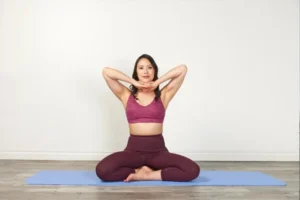Frozen Shoulder
₹799.00 – ₹999.00
- Online Available in All India.
- Home Visit Available Only In Kolkata.
Frozen shoulder, also known as adhesive capsulitis, is a condition that causes shoulder pain and stiffness, and loss of range of motion. It’s an inflammatory condition that occurs when the capsule surrounding the shoulder joint thickens and contracts.
Description
Frozen shoulder, also known as adhesive capsulitis, is a condition that causes shoulder pain and stiffness, and loss of range of motion. It’s an inflammatory condition that occurs when the capsule surrounding the shoulder joint thickens and contracts.

| Frozen shoulder | |
| Symptoms | Pain and stiffness in the shoulder, especially when externally rotating |
| Causes | The exact cause is unknown, but it can develop after an injury or immobilization of the shoulder |
| Risk factors | Menopause, diabetes, thyroid problems, Parkinson’s disease, and cardiac disease |
| Treatment | Pain medication, steroid injections, physical therapy, and massage therapy |
| Recovery time | Can take a few weeks to see progress, and up to 9 months to a year for complete recovery |
Frozen shoulder is diagnosed based on a patient’s history and clinical evaluation. Imaging studies may be helpful if there’s a concern about another diagnosis, such as a fracture.

Can Yoga & Meditation can help manage Frozen Shoulder?
Yoga and meditation can help manage frozen shoulder:
- Yoga asanas
Yoga can help relieve frozen shoulder by improving mobility, increasing muscle strength, and strengthening ligaments. Some yoga poses that can help with frozen shoulder include:
- Lifting and lowering the shoulders: Inhale while lifting the shoulders and exhale while slowly lowering them. Repeat 5-6 times.
- Shoulder rotations: Rotate the shoulders clockwise and counterclockwise 5-6 times to improve blood circulation and reduce muscle stress.
- Interlocking fingers: Inhale while interlacing the fingers, looking up, and raising the arms. Exhale while coming up and relaxing. Repeat 5-6 times.

- Savasana variation with cactus arms: Lie on your back and place your arms into a cactus position. Use a pillow, block, or bolster under the affected arm if needed. Gently press the back of your arms into the floor or prop.
- Pre-yoga preparation
Before practicing yoga, lie on a foam roller or therapeutic ball, lift your arms overhead, and gently rock for a couple of minutes






